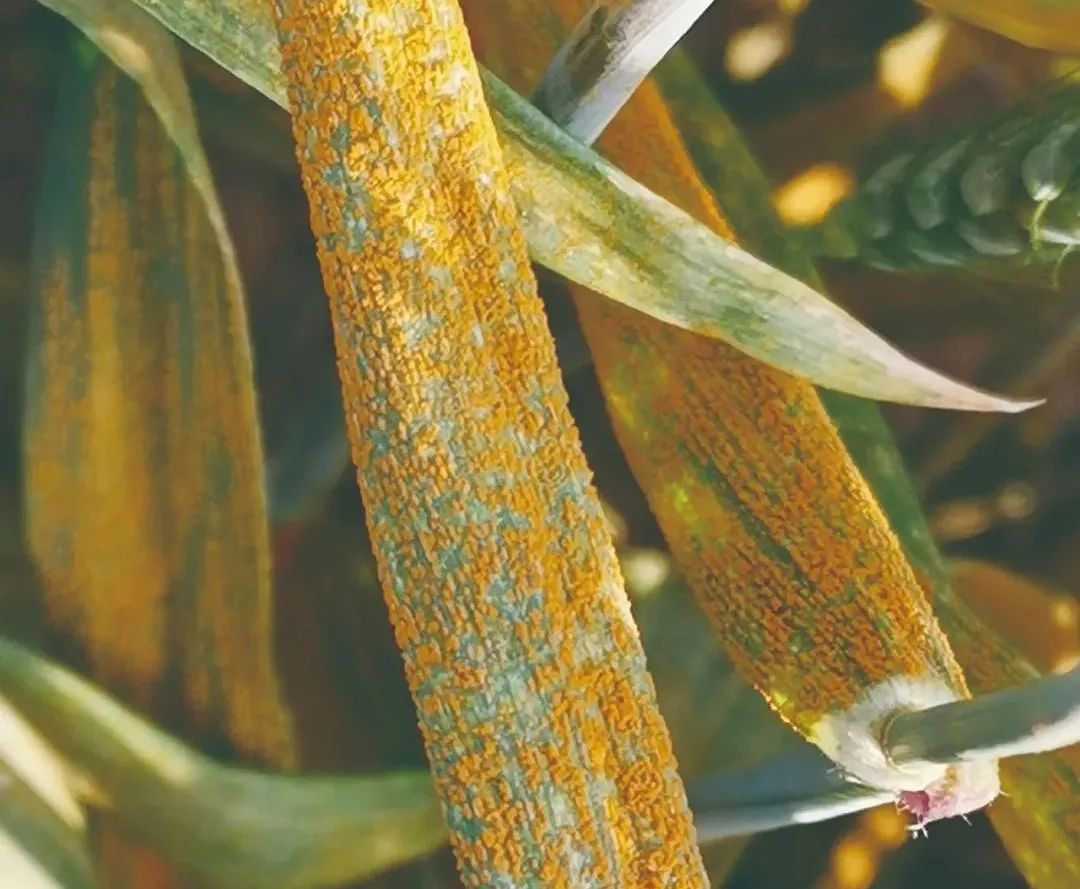This kind of wheat "cancer" can spread air!After 18 years they finally found a good recipe
Author:Journal of China Science Time:2022.07.15
Text | "China Science News" reporter Li Chen correspondent Yang Yuanyuan
Crims are called "cancer" of wheat. Since the founding of New China, eight major episodes have occurred, and after the prevention and treatment, it still loses a total of 13.8 billion kilograms of wheat.
Therefore, the Ministry of Agriculture and Rural my country lists rust as a class of crop disease.
On July 14, "Cell" published the research results obtained by the plant immune team of the Northwest Agricultural and Forestry University of Agriculture and Forestry Science and Technology for 18 years.
The team first discovered the "true murderer" of the infection of rust bacteria in wheat -sensory genes, and using gene editing technology to keep the wheat from being infected with rust bacteria while keeping the wheat output. New ideas and new ways of breeding.

Under natural conditions, wheat infection rust bacteria. Picture of Northwest Agriculture and Forestry University of Agriculture and Forestry
"Upgrade to Monster":
Insufficient in resistance to disease
Wheat is one of the most widely planted grain crops in the world. It provides staple foods for more than 2.5 billion people worldwide and is the most important food crop.
However, pests and pests often cause major losses of wheat output and seriously threaten food safety.
Kang Zhensheng, an academician of the Chinese Academy of Engineering, told the China Science News that as a fungal disease that relies on air, rust is the number of major biological disasters of wheat, which occurs in wheat planting areas around the world.
my country has always been the heaviest area of the disease. The disease will cause 10%to 30%of the output loss of wheat in the general year, and even causes the wheat to produce.
In 1950, wheat rust was popular in my country, and the output loss caused by 41.37%of the total wheat output of the year. Therefore, the effective prevention and control of wheat rust is of great significance to ensure my country's food safety.
"Cultivating and planting disease -resistant varieties are the most safe and effective measures for preventing and controlling rust." Kang Zhensheng said.
The traditional method mainly uses the breeding varieties of disease resistance genes. It has strong resistance to the disease -resistant genes, but it is easy to be overcome by germs, resulting in a disaster for diseases.
Since the 1950s, the main breeds of wheat in my country's wheat have used YR1, YR9, YR26 and other disease -resistant genes to break through the round of germs, which has made great contributions to ensuring safe production in my country's wheat.
However, as the germs are "upgraded", the prevention and control of the disease is becoming more and more passive, and the number of anti -disease genes that can be used to "do monsters" is decreased.
Wang Xiaojie, author of the thesis communications and professor of Northwest Agricultural and Forestry University of Agriculture and Forestry, told the Journal of China that after 3 to 5 years in the production of wheat varieties, the new toxic bacteria system produced by germs can often break through the resistance of varieties.
In addition, it takes at least 10 years to cultivate a variety of disease resistance with traditional methods.
"The loss of varieties is obviously faster than that of varieties. Therefore, fewer and fewer varieties used to respond to the rust of wheat strip, and the resources of disease resistance are becoming increasingly scarce." Wang Xiaojie said.
How to break this dilemma? In addition to the disease -resistant genes, there are sensory genes closely related to pathogenic bacteria. So scientists set their sights on the diseased genes.
Sensitivity genes are the host genes necessary for pathogenic bacteria to infection and disease.
Compared with disease -resistant genes, the resistance mediated by the diseased gene mutations has persistence and broad -spectrum characteristics.
"Modifying the diseased gene is an important new way to improve the resistance of crop." Kang Zhensheng said, but the negative effects brought by the multi -effects of sensory genes limited their applications. For example Affecting plant growth and development, yield and other traits, "finding sensory genes that can be used can always be the focus and difficulty of plant pathology and crop resistance."
Relax scientific research:
Open the mysterious veil of sensory genes
It turns out that wheat rust bacteria is a living nutrition parasitic fungi. When infection, the main cells are drawn from the host cells through the suction cell, and at the same time to the host wheat toxic the toxic effect, the effect is to manipulate the host of the host sensor or other channels to achieve the invasion of the host wheat. Infection and disease.
The first author of the paper, Wang Ning, a postdoctoral University of Northwest Agriculture and Forestry University of Agriculture and Forestry, said: "Sensential genes are necessary for pathogenic bacteria to infection, fixation and reproduction. The essence of pathogenicism and development of the disease prevention and control strategy provides a scientific basis. "
The team has long been engaged in the sustainable control of wheat rust control applications and basic research.
Because wheat rust bacteria cannot be cultivated artificially and cannot be generated, the team starts with wheat and rusty bacteria, in order to find the key pathogenic factors and sensory genes of wheat rust bacteria.
This "racing", which has 18 years of germs, started with Wang Xiaojie's doctoral dissertation.
In 2004, under the guidance of Kang Zhensheng, Wang Xiaojie began to study the molecular mechanism of wheat and rust bacteria.
In 2007, during the gene expression experiment after doing rust bacteria infection with wheat, he found a gene that had never been seen in the wheat and named it TAPSIPK1.
He found that the gene of the gene can reduce the sensibility of wheat rust; while expressing the gene, it enhances the sensitivity of wheat to rust bacteria and mediated wheat infection rust.
However, due to the restrictions on the technical level and hardware facilities of the year, Wang Xiaojie never unveiled the mystery of this gene during the PhD.
However, he firmly believes that there is an important secret behind this gene.
In the blink of an eye, 11 years later, the doctor of that year was a blog director. Wang Ning became Wang Xiaojie's first disciple.
Wang Xiaojie "took out" the gene that kept him always miss and gave Wang Ning as a gift. I look forward to revealing the "secret of the Pandora's box" and clarifying the confusing of this gene and wheat rust. relation. Design experimental schemes, research experiments feasibility, scrutiny of each experiment ... Although the difficulties are difficult, the team members never give up lightly and embarked on this unknown path.
In the end, the team tapped the world's first wheat sensitivity Tapsipk1, which was used by the toxic protein of germs, encoded cytoprocin -type receptor protein kinase.
The first author of the paper, Tang Chunlei, an associate researcher at Northwestern Agriculture and Forestry University of Agriculture and Forestry, introduced that the sensor of the diseased gene tapsipk1 negatively regulates the basic immunity of the wheat. Inhibit the transcription of resistance -related genes, enhance the transcription level of sensory genes, amplify the sensing effects of the medium of sensing genes, and promote the sensation of wheat.
Guarantee stable production:
Realize the sources and control
The team members were very excited after identifying the world's first wheat rust sensing gene. They expect to verify their application potential in wheat.
Fan Xin, the first author of the paper and a doctoral student at Northwest Agricultural and Forestry University of Agriculture and Forestry, introduced that they used gene editing technology to accurately knock out the sensory gene and destroy the identification and interaction of toxic protein and sensor genes.
What is exciting is that the wheat editor has achieved long -spectrum resistance to the three major small species of rust bacteria in my country, and anti -wheat leaf rust.
Field tests have proved that the wheat editorial department can also maintain the main agricultural traits such as thousands of weights, plant heights, and signs, that is, maintaining stable yield.
From 2020 to 2021, the rust disease in Shaanxi Province is very popular. The Department of Wheat Crusted Cruster Sensitivity Edit in the field shows the characteristics of high anti -strip rust.
"Under the premise of maintaining the main characteristics of the crops, the Department of Wheat Editing shows the characteristics of high anti -anti -strip rust and has good application potential. This is a sensory gene that can be used for the improvement of wheat resistance and improvement." Wang Xiaojie said.
Kang Zhensheng pointed out that the discovery of wheat sensing genes is a major breakthrough in the field of plants and pathogenic bacteria, marking a big step in my country in this field.
This result breaks the traditional ideas of the main use of diseased genetic breeding, enriches the gene types available to disease -resistant breeding, opened a new way for wheat biochemical breeding, and provides scientific and technological support for the green prevention and control of modern biological breeding and diseases in my country.
Chen Jianping, an academician of the Chinese Academy of Engineering, commented that the team created a wide -spectrum and long -term resistance of wheat materials through the interaction of destroying the effect of the bacterial effects and the diseased genetic gene, showing the huge application prospects in the field.
This research work has both theoretical breakthroughs and production application value, and is an iconic achievement in the field of plant pathology and crop resistance.
"The seed industry is entering a new stage of highly integrated and highly integrated biotechnology, information technology, and engineering technology, and gradually becomes a key areas of the new generation of technological revolution. Excellent germplasm and genetic resources are the key to the innovation of the seed industry. Who who is the innovation? Whoever obtains crop gene resources and cracks the function of genes will have the right to speak and dominate the seed industry. "
Xu Weigang, academician of the Chinese Academy of Engineering, said that the original major achievements of the plant immune research team of Northwestern Agricultural and Forestry Science and Technology in Wheat Sensitivity genes is a breakthrough The new chapter of my country's self -innovation of the seed industry.
Related thesis information:
https://doi.org/10.1016/j.cell.20222.06.027
"China Science News" (2022-07-15 The first edition of the original title "Wheat" cancer "is stable and produced again")
not
Edit | Zhao Lu
Capture | Guo Gang

- END -
Liaoning issued the "Implementation Plan": Accelerate the construction of strong ice and snow economy

A few days ago, the Provincial Development and Reform Commission, the Provincial D...
Shenzhou Meteorological Observatory lifted lightning yellow warning [Class III/heavier]
Shenzhou Meteorological Observatory lifted the thunderbolt warning signal at 23:43 on June 07, 2022.